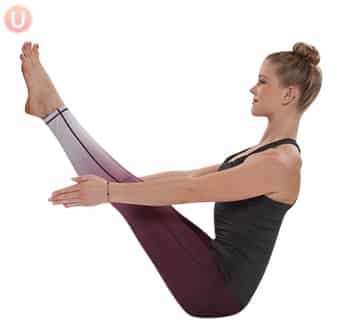How To Do Boat Pose
Boat Pose is a core strengthening pose that teaches your body to pull your lower abdominals in and hold a balance position at the same time. This pose also strengthens the hip flexors and spine. While some struggles come at first with the balance part of this pose, most people can learn how to do Boat Pose over time with practice or modification techniques.
One of the first struggles often noted when learning Boat Pose is tight hip flexors. Extending the legs out straight away from the body automatically engages the hip flexors. This is a good thing because it strengthens an otherwise weak area for most people. However, it is important to take one step at a time so that the hip flexors don’t overpower the rest of the benefits of Boat Pose. One modification is to begin this pose with bent knees. Practice this for some time until the abdominals are naturally engaged and then work into a straighter leg position.
Yoga Journal also suggests another way to learn Boat Pose while sitting in a chair. Sit at the front edge of the chair, holding the sides of the chair with your hands and raise the hips slightly off the chair and heels slightly off the ground (keep your toes on the floor). This will relax hip flexors but teach the low abdominals to pull in.
When you begin practicing the Boat Pose, start with knees slightly bent, hands on the floor and hold for 20-30 seconds before lifting the hands, then hold a few more seconds. Practice this a few time before extending your legs.
Here are the steps to performing Boat pose:
1) From a seated position, draw naval to spine bracing abdominals and, with hands on floor behind you, bring your legs up off the floor with knees bent in front of the chest.
2) Keeping abdominals tight, slowly lift hands off floor and reach them forward and up while simultaneously lengthening legs upward. Your body will look like a “V” shape. Lengthen spine as you hold. (If your hamstrings are too tight, bend knees slightly.)
3) Keep abdominals tight and breathe. Stay for 30-60 seconds or as long as you can.
